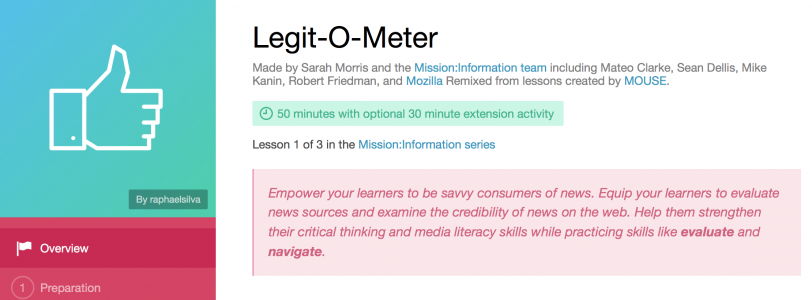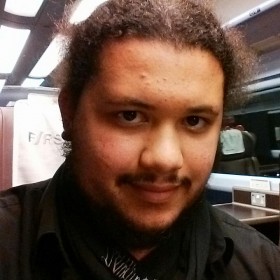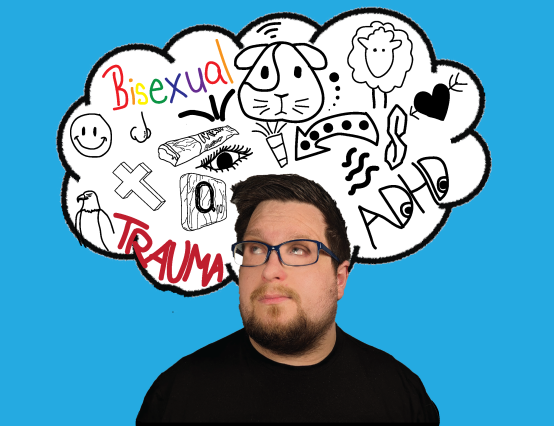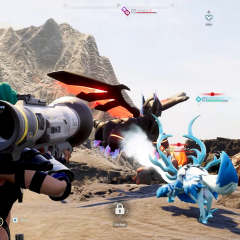Fake news is by far one of the most prevailing topics of conversation over the last two years. Indeed, in 2016, Oxford Dictionaries 'post-truth' as the word of the year. Imagine that! So discussed was the distribution of fake information that it became word of the year.
Although the existence of fake news is far from new - as we presented in our workshop - it has far greater reach now than at any other point in history. Furthermore, it is even easier for young people to access it. Sarah Morris from Nucleus Learning Network is overseeing a project that is developing a curriculum to help young people discern fact from fiction.
Her session began by getting people to introduce themselves. There was a healthy mix of professions and interests in attendance, from reporters and librarians, to students and young people. Some were looking for research for their own studies, and others wanted to know how to fight the good fight.
There were multiple components to the workshop, and one of the first was to get people to offer suggestions on how we can combat fake news. Some of the suggestions included:
- Creating international standards for news writing and fact checking
- A rating system for news organisations and journalists to see who spreads fake news
- Encourage and train people to write news without spin by getting them to write about local events
- Train young people from an early age how to recognise fake news, perhaps through civic studies
Mission:Information, the catchy title for the News Literacy Curriculum Morris is overseeing, is working with Open Austin and the Austin Monitor to help create an open source resource and teaching guide to deliver to teens - with additional support from Mozilla.
It aims to "empower teens with the news and web literacy skills they need to become strong consumers, producers, and distributors of media and news online." Not only does it seek to equip teens to engage safely and smartly with news, but it hopes that it will help them develop the skills to shape and create the online ecosystems too.
Among the resources currently available in the curriculum is a Legit-O-Meter that challenges young people's ideas of the media and help them become better consumers, and a game where they get the chance to run the press and decide whether to prioritise clicks or facts. All of the learning objectives are underpinned by the Web Literacy Map outlined by Mozilla. Two great resources Sarah shared with us are Thimble and X-Ray Goggles - both of which are Mozilla created tools to teach people how to remix webpages and learn how to code HTML, CSS and JavaScript.
During the session we were split off into groups to discuss our own experiences and thoughts on fake news. I was paired with a journalist and a reporter, and both had strong thoughts about the prevalence of fake news. During the time we had together we discussed how and if the state should step in to further limit fake news and hold the platforms who host it responsible. This led into a brief derive into Germany's plan to fine social media networks if they fail to take down hate speech and fake news. Discussions then touched on the decline in 'professional' reporters and a reliance on social media both for both sourcing the news and distributing it.
We also had a debate over Freedom of Speech started, with the (American) journalist saying she was becoming increasingly aware that people would rather curtail the right to freedom of speech to prevent hate speech. I played devil's advocate and said that everyone should have a right to speak, and only by airing the most repugnant ideas will we be able to challenge, debate, and disprove them. I argued that it was through no-platforming and a shouting down of opposing ideas that populist movements like Brexit and Trump came to be. We didn't settle on a conclusion, although solving an age-old phenomenon like fake news was likely to be solved in 20 minutes.
The closing section of the session provided some fantastic insights. One group raised how, to some extent, trying to fight fake news was working against our own human instincts, and people love conspiracies. We naturally possess a degree of bias, and latch onto information that validates our preexisting beliefs. This raised the question on how to to dispel a conspiracy theory, given that genuine facts and information used to challenge an idea can often force people to double down on their opinions.
An interesting suggestion was that perhaps we should adjust our approach. Rattling off numbers and statistics doesn't appear to be compelling for a reader, and as such they don't fully engage with the underlying arguments. However, people love stories, so maybe it would be more effective to create a narrative. If we use the story to pull people in, they may become more receptive to the argument and facts included. There was also a brief discussion about a study conducted by researchers from the universities of Cambridge, Yale and George Madison, who claim that the use of a 'psychological vaccine' could help immunise public against fake news.
To find out more about the Nucleus Learning Network, visit their website. Find out more about Mission:Information here, and all of the resources can be found on Github. If you missed our own fake news session, you can read a summary of it here.










The line between fiction and fake needs to be as clear as possible.